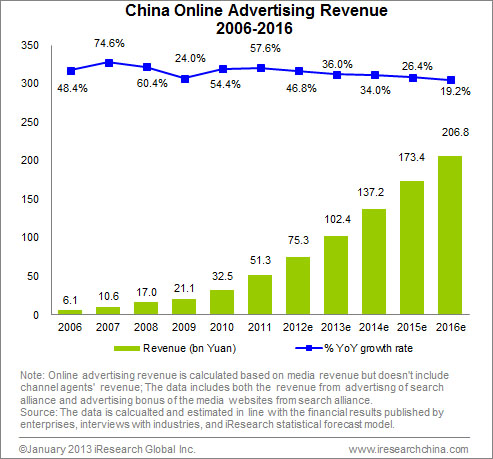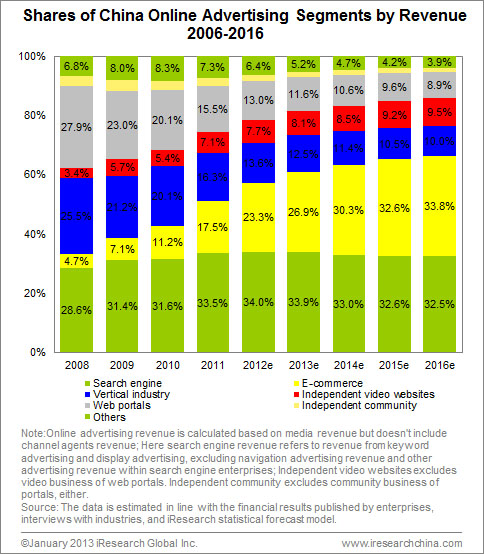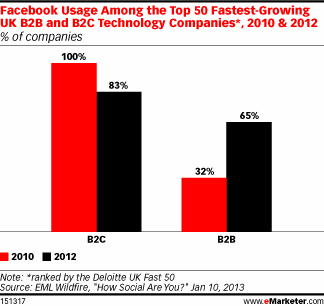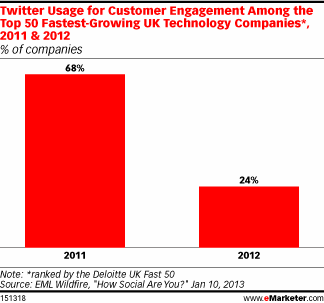Five Friday Facts #65

In China, e-commerce driven by prospect of anytime shopping, low prices
Last month, We Are Social’s report on Social, Digital and Mobile in China detailed the rise of e-commerce in the burgeoning market. The report noted that there are over 240 million online shoppers in China, collectively spending at a staggering rate of $40,000 per second. TheNextWeb cites another insightful report in this regard, that casts further light on the state of e-commerce in the Chinese market. An infographic published by Go-Globe indicates that B2C e-commerce sales have nearly doubled in the last year, increasing by 94% or roughly 132.8 billion SGD in 2012. The infographic further suggests that e-commerce in China is mostly driven by the prospect of anytime shopping, low prices, and convenience. 28% of Chinese respondents cited the ability to shop anytime as the reason for making purchases online, whilst 25% of them cited low prices. Convenience was the main reason for 18% of participants, while 7% indicated the ease of making price comparisons online.
US airport becomes first location with one million check-ins on Foursquare
Earlier this week, Foursquare reported that it had logged its first single location with one million check-ins. As TheNextWeb reports, this milestone check-in took place at the Hartsfield-Jackson airport in Atlanta, the state-capital of Georgia, USA. As recently as November 2012, the mobile location-based social network had announced an impressive number of 3 billion check-ins worldwide. As TheNextWeb notes, this means that airport’s check-ins account for 0.03% of total check-ins, which is “still quite sizeable if you remember it’s just one place.” To commemorate the 3 billion check-ins, Foursuqare launched a site that details the most popular locations to check-in across the United States.
In China, online ad revenue increased by 46.8% in 2012
A recent report by iResearch indicated that revenue from online ad spending had increased by 46.8% in China. The revenue was up to roughly 75.3 billion Yuan, or 14.9 billion SGD in 2012, from ad spend of 10.2 billion SGD in 2011. While the revenue was considerably higher in the past year, it is interesting to note that the year-over-year growth rate itself had declined somewhat, down from 57.6% in 2011.

iResearch notes that this growth can also be understood further based on a breakdown of the online platforms involved. Revenue from search engines only increased sightly, from 33.5% to 40%. By contrast, ad revenue from e-commerce and online video sites grew at a rapid rate. E-commerce share of online ad spend was at 23.3 in 2012, up from 17.5% in 2011. Video sites took 7.7% of the segment share, up from 7.1% in 2011.

iResearch suggests that this corresponds with the increasing popularity of e-commerce in China, as well as the growing interest in online video amongst Chinese internet users. Indeed, as Chinese internet users increased rapidly in the past year, online video also became more popular than search engines as an internet service in May 2012.
In UK, 98% of growing tech companies on LinkedIn–not so much on FB
According to a recent report by eMarkerter, LinkedIn was the most popular social network used by fast-growing tech companies in the UK. Based on a study by PR firm EML Wildfire, the study confirmed that 98% of the companies listed in this segment were using LinkedIn to engage with their audience.

Twitter came in second, with a strong 82% of companies reportedly using the microblogging platform. While Facebook came in at 68%, perhaps the most striking aspect of this share is the fact that it represents a decline in usage for B2C companies in 2012. B2B companies had increased their presence on Facebook to 65%, up from 32% in 2011. However, while all of the B2C companies cited in the report used Facebook in 2011, the numbers had dropped to only 83% of those companies in 2012.

While many of the growing tech companies in the UK seem to have a presence on Twitter, eMarketer notes that its use for customer engagement has sharply declined amongst the companies as well. As the graph indicates, many of the companies that have established a Twitter presence have decided not to start or continue engaging their customers online.
53% of Indian smartphone users prefer game, chat apps over call/text
Nielsenwire recently reported on the increasing penetration of smartphones in India. Of the 900 million mobile subscribers in India there may be about 40 million smartphone users amongst them early on in 2013. Nielsenwire’s smartphone user survey demonstrated that those users who switched to smartphones had also changed the way they used their mobile phones as well. In particular, Indian smartphone users were showing an increasing preference for using apps on their mobile devices.
The most popular kind of apps were games, taking up 58% of the poll; however, chat and instant messaging apps came close behind, with 53% of respondents indicating that these were their preferred smartphone applications. By contrast, voice calls and text messaging had declined to consist of 25% of smartphone usage. Nielsenwire notes further that almost half of polled smartphone users do not have access to active data, and 48% of whose who were data users were also under the age of 25.
